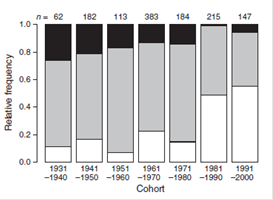
Close-Kin Mark Recapture & Epigenomics
A first goal in conservation biology and fisheries management alike is to know how many individuals there are in a population. Such information is vital for the purpose of designing conservation or management strategies. Estimating population abundance (Nc) with accuracy and precision is, however, extremely difficult. Current approaches rely on catch per unit effort (fisheries), aerial surveys (terrestrial/marine mammals) or when feasible, mark recapture. Such methods are, however, subject to biases and uncertainties (e.g., misreporting, gear change, fisheries), are imprecise (aerial surveys) or are not always feasible (mark recapture). They are generally also effort/time intensive and very expensive.
We are estimating population abundance (Nc) of Atlantic halibut (Hippoglossus hippoglossus) in the NW Atlantic using genomics and the close kin mark recapture (CKMR) method. In this method the genotype of an offspring is considered a recapture of the genotype of the parents. The number of parent–offspring pairs identified between a sample of juveniles and one of potential parents can be used to estimate abundance. CKMR relies on the accurate identification of kin pairs (parent-offspring (POP) and half-sib pairs (HSP)) which in turn requires accurate age estimation. Age in fish is traditionally estimated by counting otolith growth rings, an effort-intensive, and lethal method requiring highly specialized expertise. Accordingly, we are also developing and calibrating epigenomic ageing clock for halibut.
Molecular evidence of an evolutionary response to size selective
harvesting in Atlantic cod
Harvesting marine fish has long been argued to be a strong agent of selection and a number of studies have described phenotypic or life history changes in response to harvesting. In a collaborative effort with Icelandic colleagues we recently published a study led by PhD student Klara Jakobsdottir, which used a 60 year long genetic data set to demonstrate molecular genetic changes in a heavily exploited cod stock off Iceland. Changes in allele frequencies were observed in a functional gene that in Icelandic cod is linked to growth rate while no changes were observed in neutral microsatellite markers over the same 60 yr period. These results are consistent with an evolutionary response to intense size-selective harvesting!

Jakobdottir et al (2011) Evolutionary Applications 4: 562- 573
